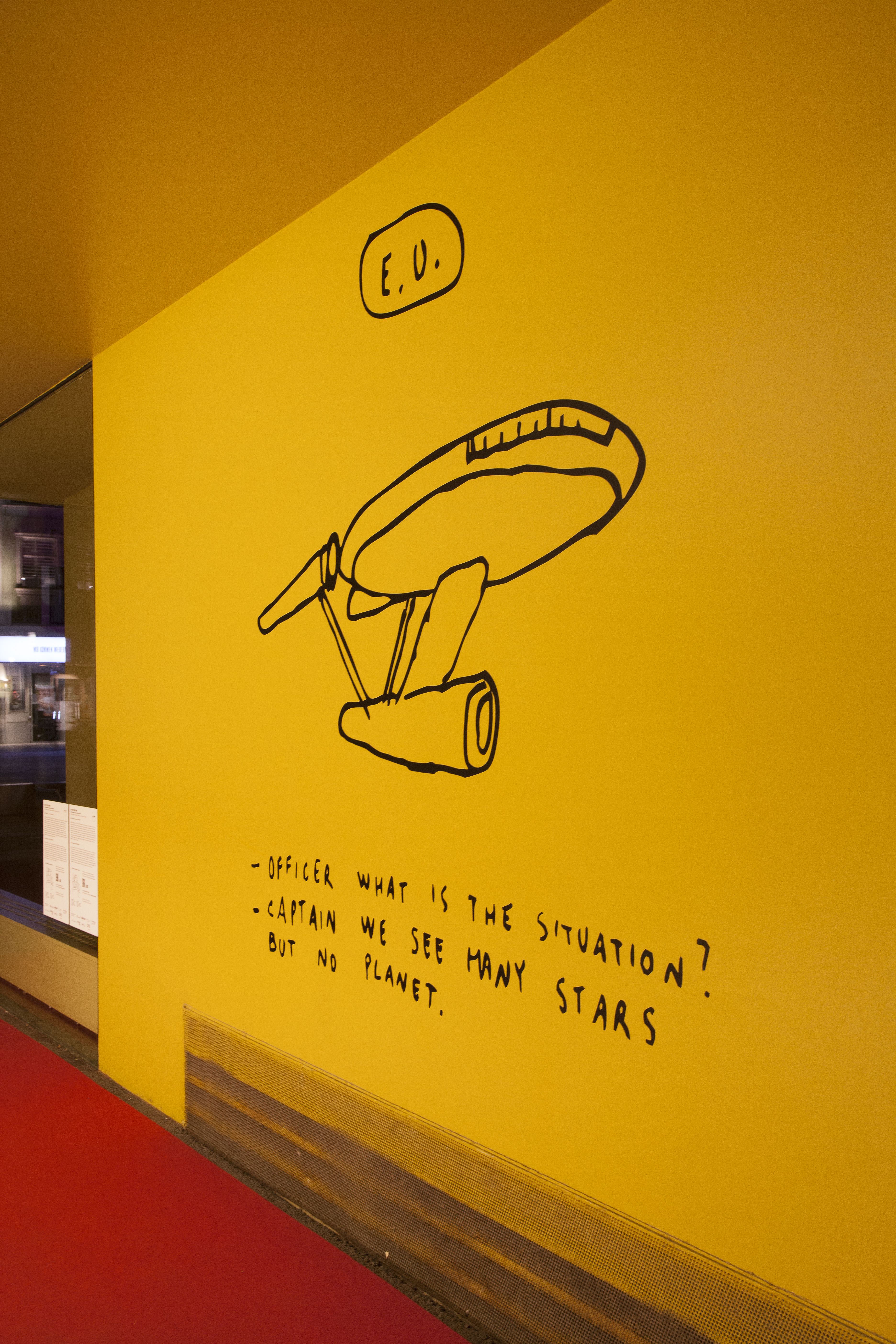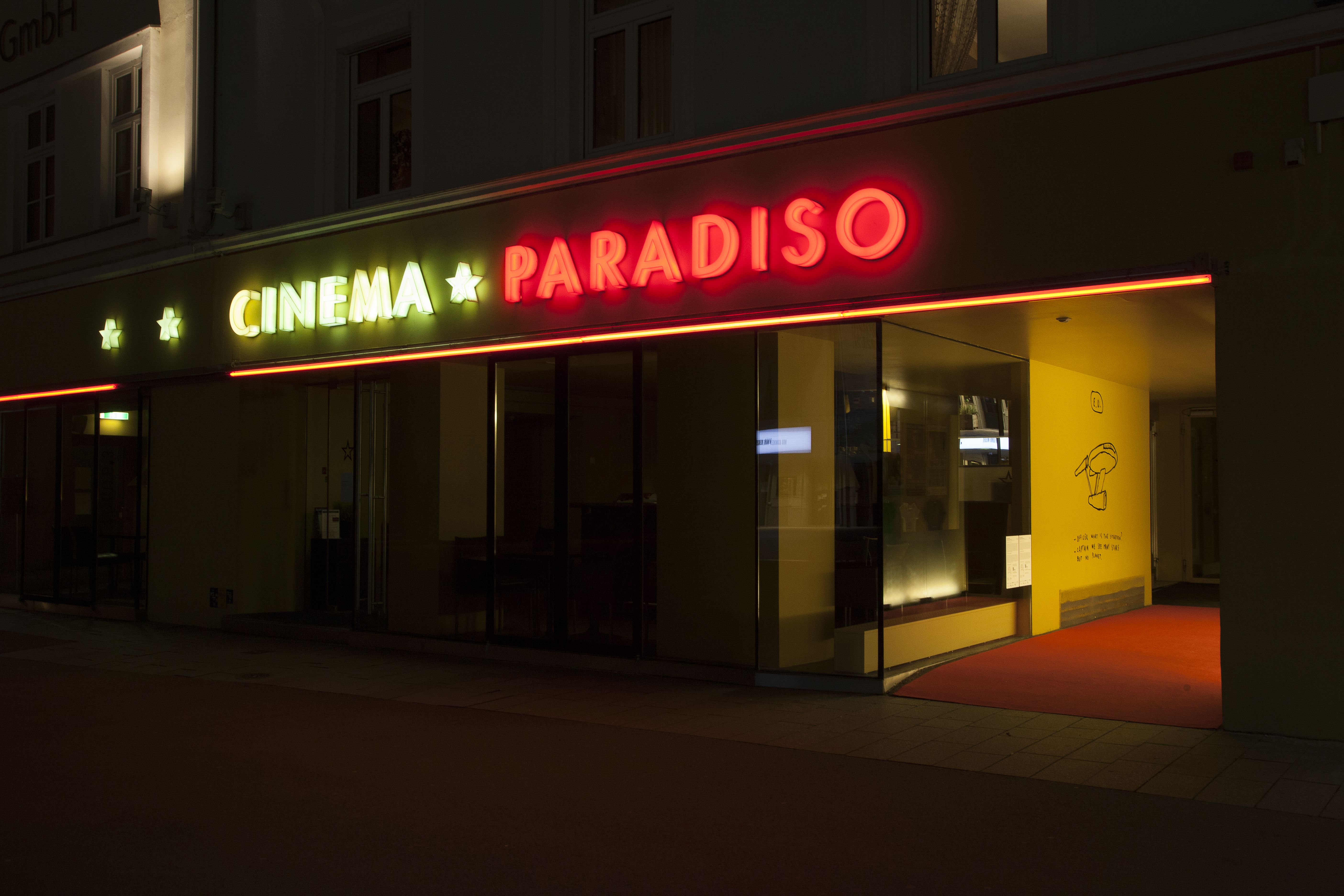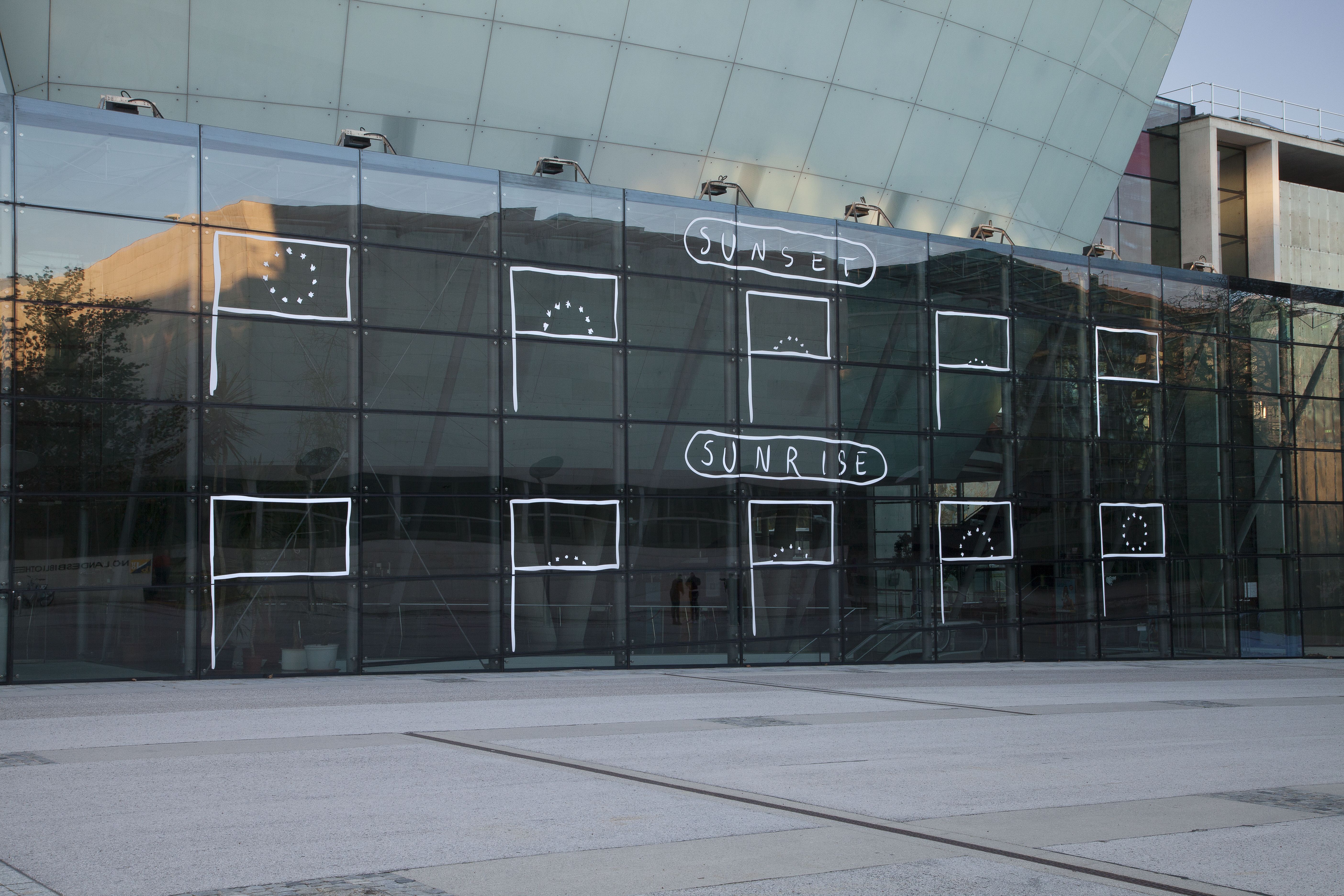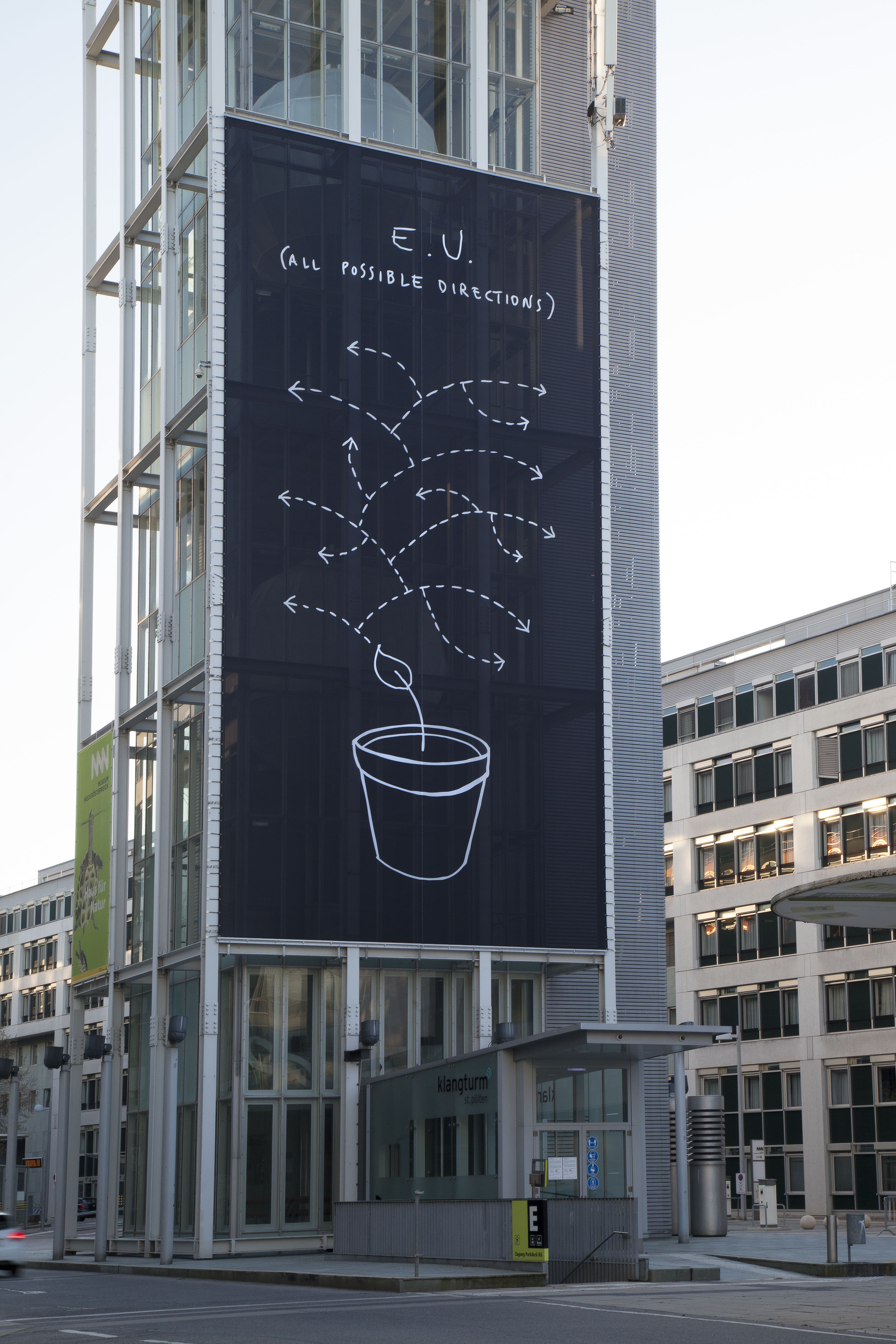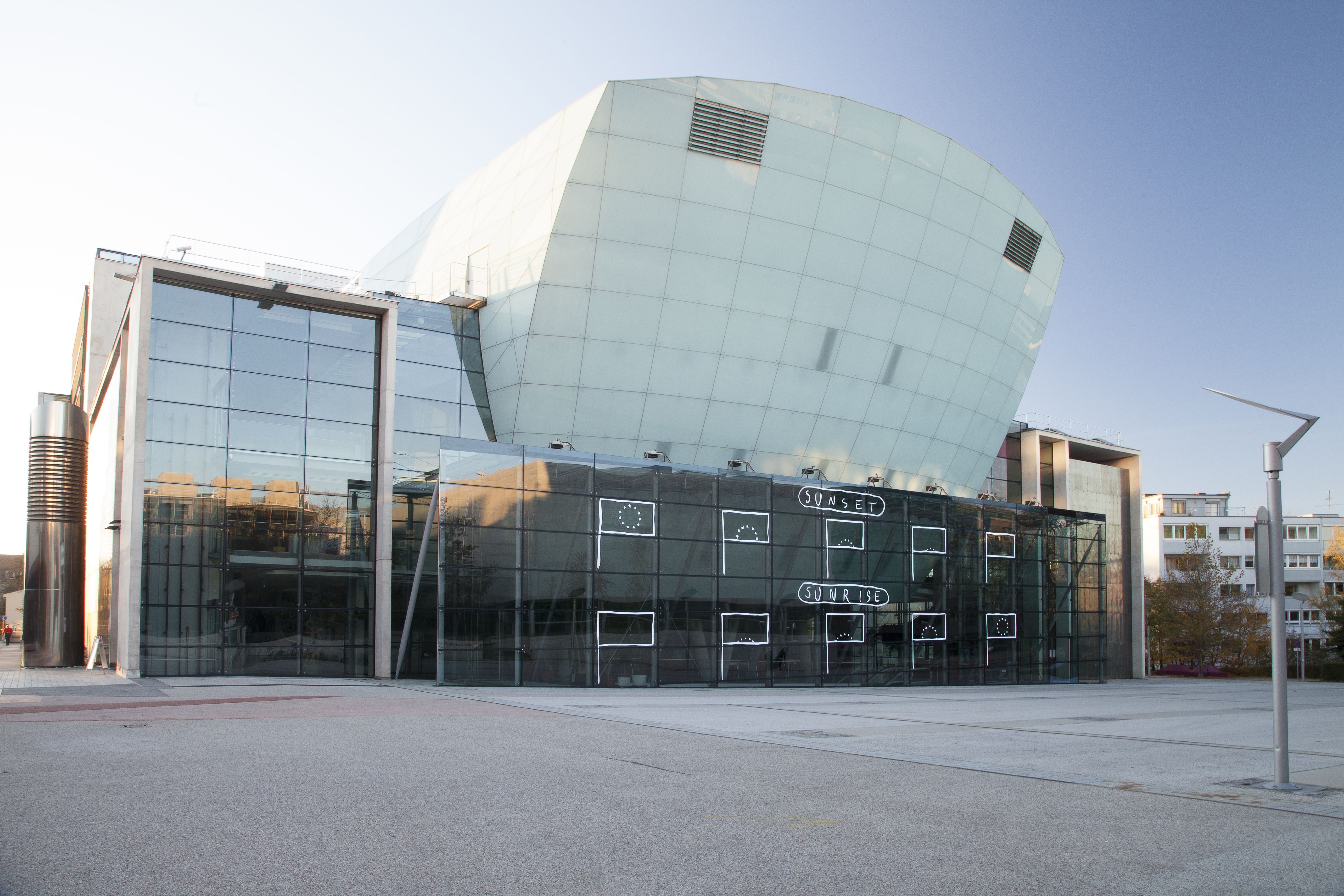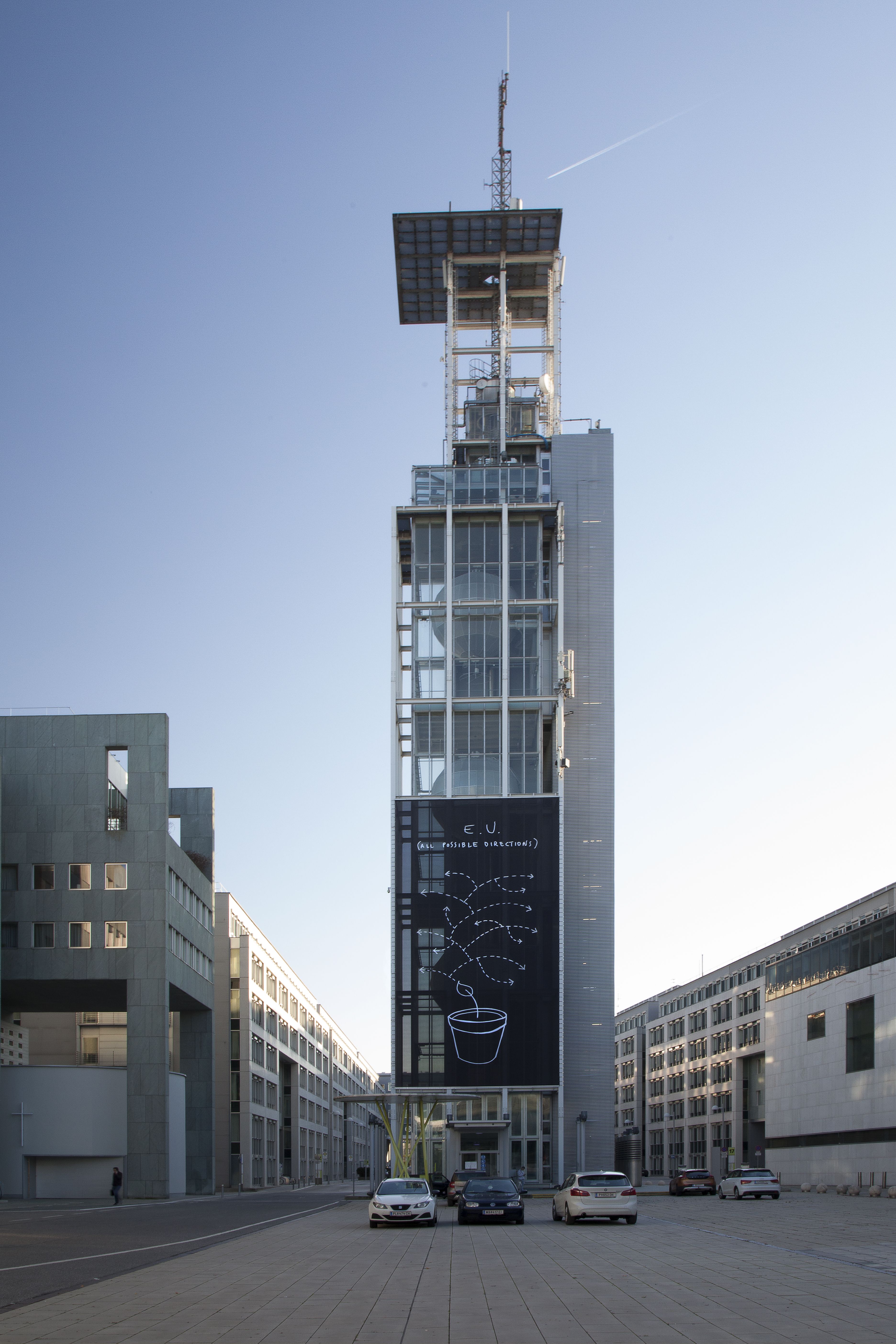IN THIS TOGETHER
BackArtists
- With
Information
IN THIS TOGETHER was born out of the idea to realize a contemporary public art project that would mark the 25th anniversary of Austria’s joining the European Union in 2020. Following the motto “diversity, pluralism, and solidarity: a peace project,” it was meant to inspire people to reflect on the significance and achievements, as well as the rough edges and limits, of Europe not only in the Austrian capital, but also in the youngest state capital in Europe, which led to the choice of St. Pölten in Lower Austria as its location. Two artists, who have been living and working in Austria for many years but were born in different parts of Europe, were invited to develop this project artistically, thereby introducing a certain outside perspective: Aldo Giannotti (born 1977 in Genoa, Italy) and Borjana Ventzislavova (born 1976 in Sofia, Bulgaria).
The two artists visited St. Pölten a number of times during the planning stage, and together we went on strolls through the city to choose buildings and places where they would want to establish an artistic intervention. From the beginning, the key idea was to select several sites in the city where art would be installed in order to establish a kind of route that could be followed while looking at the outdoor artworks. The project was also intended to build a kind of bridge between the city center and the government district.
The planning stage of the project lasted several months. However, when in March 2020 the Covid-19 pandemic reached Austria and the first lockdown was ordered, it became a question whether the project could be realized at all. Then, shortly after Easter 2020, the project was given the green light. Together with Barbara Horvath and the organization art hoc projects, which the two of us founded together and which aims to bring successful international contemporary art to unconventional locations, we began with the realization of the project. Not only the State of Lower Austria, but also the City of St. Pölten and a large number of sponsors helped us to realize the project in the form it took in the City of St. Pölten in November 2020. In the end, the two of us, or actually the three of us—on many occasions we were also assisted by Martina Thaler in all issues relating to communication—established a public art project within only half a year that not only involved all central buildings and stakeholders in the city and state, but which also made a valuable artistic contribution to the discourse in the beginning of the Covid-19 crisis.
As we realized in hindsight, several artistic aspects profited greatly from the moments of insecurity we all felt. Both artists incorporated experiences from the rampant pandemic in their works. The title IN THIS TOGETHER is also a reference to this, of course. While Ventzislavova decided to mount neon messages that were rendered in her handwriting at the main train station, the city hall, and the state parliament—sometimes at a staggering height—Giannotti designed an entire series of drawings from which a small selection was finally realized at the Klangturm, the festival hall, Cinema Paradiso at Rathausplatz, as well as on posters and tote bags, which were handed out for free in the city.
In their artistic interventions, Giannotti and Ventzislavova shared their questions, perspectives, and hopes for Europe with the public. For generations, artists have been trying to convince us time and again that a crisis can function like an engine that sets many things in motion. With their ideas for the public realm, Borjana Ventzislavova and Aldo Giannotti have not only created artworks that react to “the world out there” directly and in real time; they have also given all citizens a source of inspiration, courage, and comfort; an instrument for criticism; and—last but not least—the awareness that, especially in face of such a major crisis as the current pandemic, Europe is an idea that stands for solidarity and for helping one another and is one that reminds us all of our right and our duty to be part of it and to participate in it.
Giannotti’s works in particular were very critical in their approach to the idea of Europe. For example, he wrote “E.U. – All possible directions” in a drawing that was enlarged to a monumental size showing a potted plant with the directions in which it could grow—up, down, left, right—indicated with dashed lines. The plant stands here for a European Union whose development seems uncertain but whose future is clearly in our hands. Ventzislavova also approached the task with a critical mindset and posed the question “Quo vadis, Europa?” at the city hall, while at the main train station she referred to the mythological and eponymous figure of Europa and the pressing issue of migration with her sign that translates as “Her name is Europa. She came over the sea.”
Due to the pandemic, we could only provide a limited art education outreach program. We organized tours from time to time, and there was an accompanying exhibition in the historical Stöhr-Haus building on Kremser Gasse with additional works by both artists. The project was much discussed in the press, and there were many local inhabitants who were enthusiastic about the project, which was the most valuable outcome for me. Someone wrote, for example, “Will the project remain? It has become really important to me.” Especially during the lockdowns, of which there were five during the duration of the project, many people suddenly realized the importance of public art. The public realm is a political realm that is available to us all, but it is also permanently changing. It is where art comes to the people—in this case, art by two artists who are making a big splash internationally and who use art to make their voices heard for a Europe that will continue to grow, prosper, and be unified in the future. Or, as Ventzislavova put it, “It is time to ask ourselves what kind of world we want to live in. Perhaps Europe can be the proverbial beacon of light in this regard. Let’s all participate in this. It’s about us.” With this in mind, it is also a beautiful pro-European gesture that the City of St. Pölten, the State of Lower Austria, and the Austrian railway ÖBB decided to acquire the works that Ventzislavova designed for the city hall, the Lower Austrian parliament, and the train station, thus making it possible for the project to be permanently inscribed into the city and its history.
Lisa Ortner-Kreil
Contributors
- Kuration
Contributions
ALDO GIANNOTTI
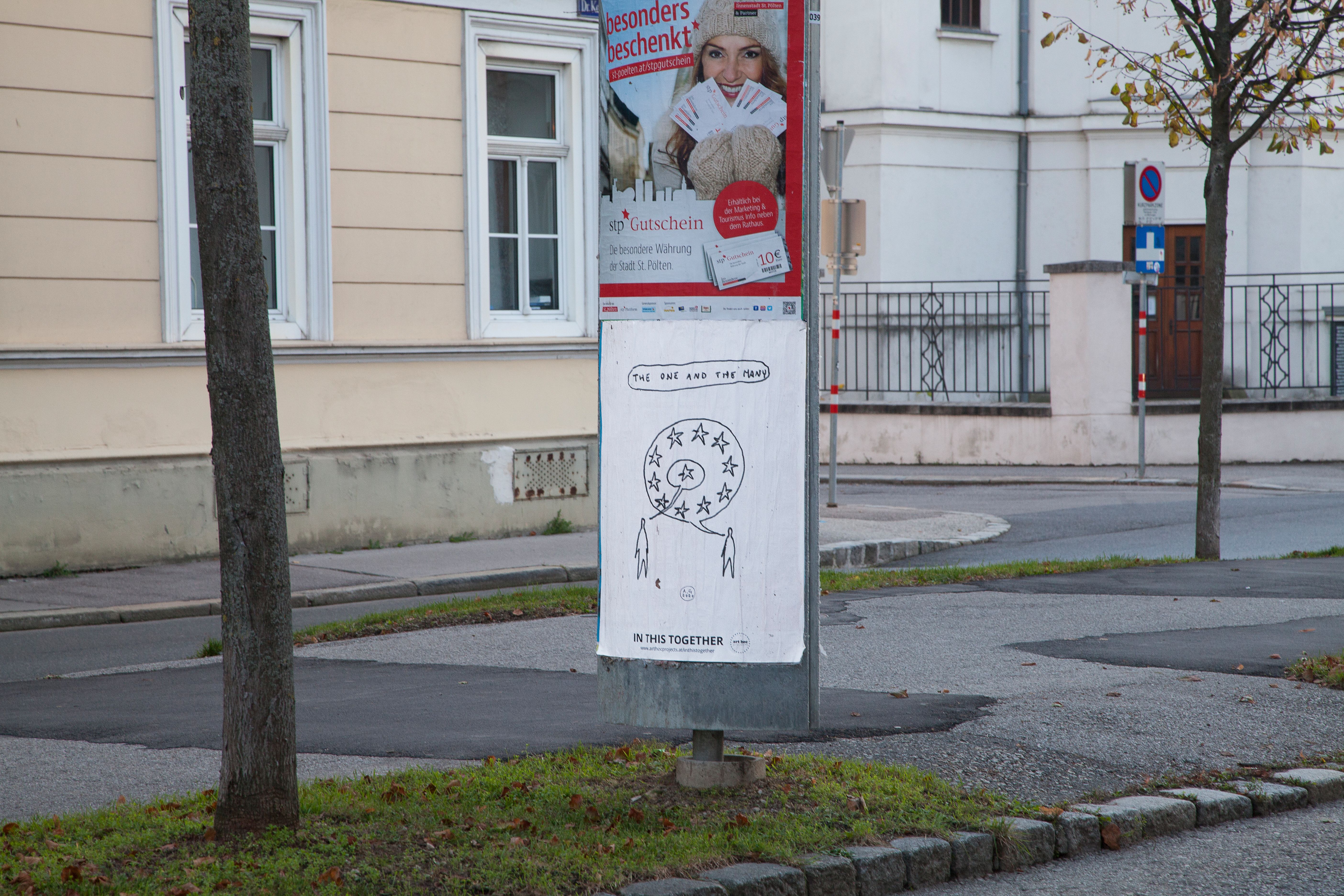
Aldo Giannotti zeichnet Europa in der Krise
Für IN THIS TOGETHER hat der Künstler eine Reihe von Zeichnungen produziert, die großflächig auf Gebäude-Fassaden und animiert auf Flat-Screens erscheinen, als auch auf Postern und Taschen wiederzufinden sind, die im Cinema Paradiso und im Festspielhaus zur freien Entnahme aufliegen. Giannotti kommentiert über seine Zeichnungen pointiert die europäische Identität in Krisenzeiten. In einem Cross-Over aus Kunst- und Sozialkritik bedient er sich einer minimalistischen, oft humorvollen Darstellungsform, um „verschobene“, mitunter „ver-rückte“ politische und gesellschaftliche Zustände zu visualisieren und zu greifbar zu machen.
„In meiner künstlerischen Praxis spielt die Zeichnung eine zentrale Rolle (…) Die Zeichnung hilft mir, meine Idee zu Papier zu bringen und eine Pointe zu formulieren, die die Form eines Statements, einer Frage oder eines Witzes annehmen kann. Während meine Arbeit oftmals ortspezifisch ist, thematisiert sie bei diesem Projekt auch spezifisch die Zeit, in der sie entstanden ist. Ich übe sozusagen eine kommentarhafte Kritik an der Identität und der Verantwortung Europas in Krisen-Zeiten. Die Interventionen sind gewissermaßen Reflexionen des Status Quo und der Zukunft der Europäischen Union. Mit meinen minimalistischen Schwarz-Weiß-Zeichnungen setze ich mich mit komplexen Themen auseinander, wie etwa die Rolle des Individuums als Bürger der EU, und eröffne ironische Perspektiven, aber auch einen Anstoß, die Europäische Union neu zu denken.“ (Aldo Giannotti)

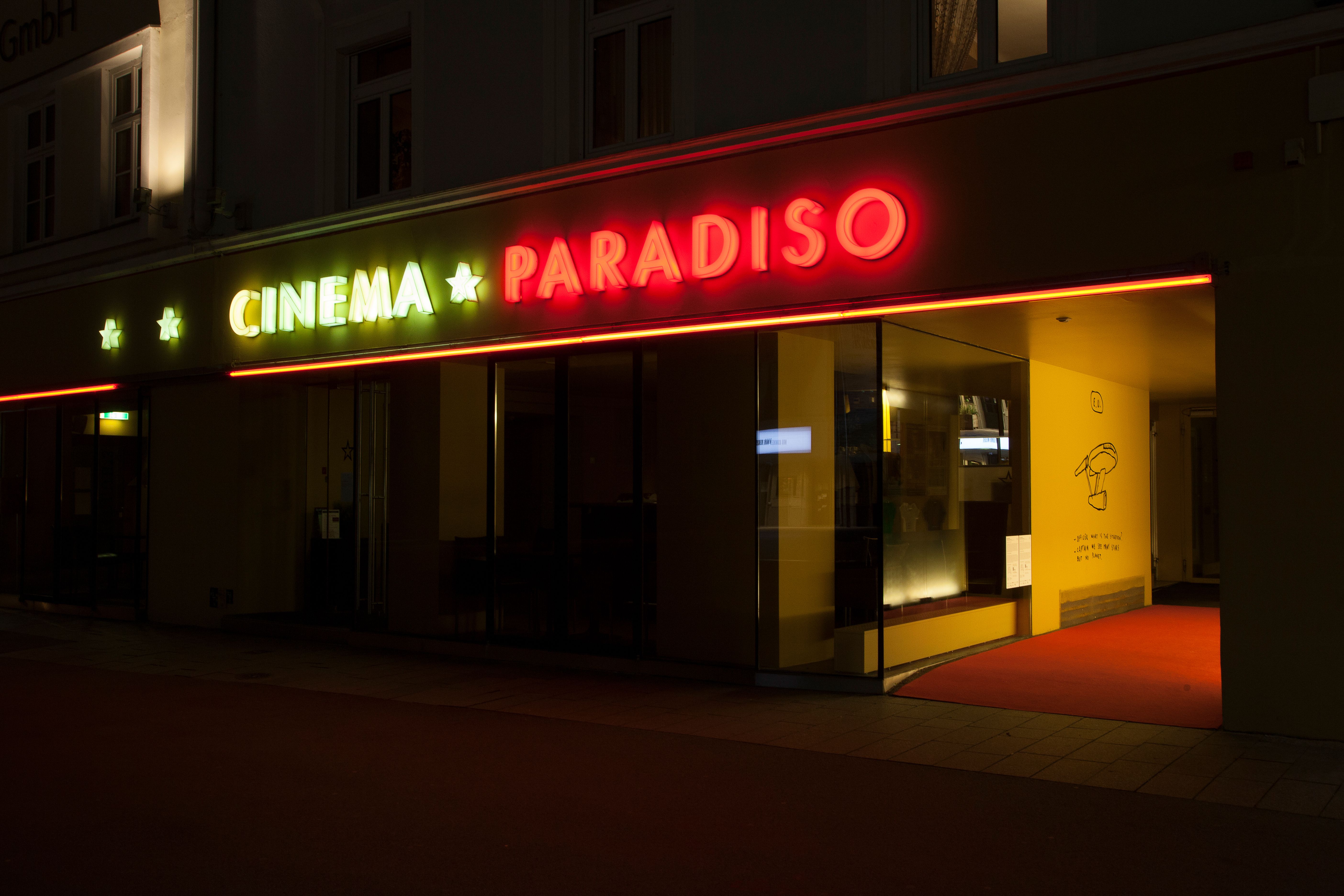
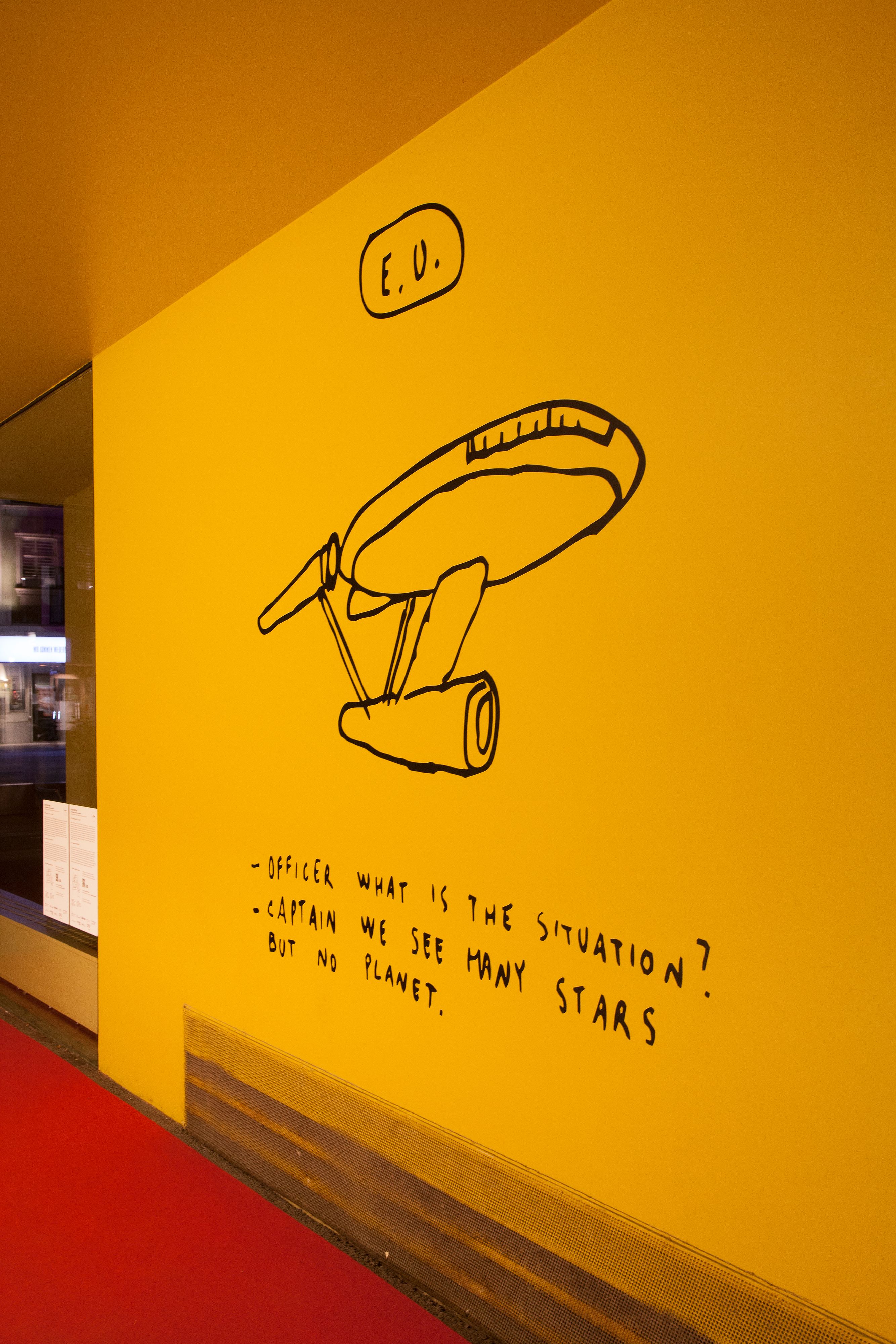
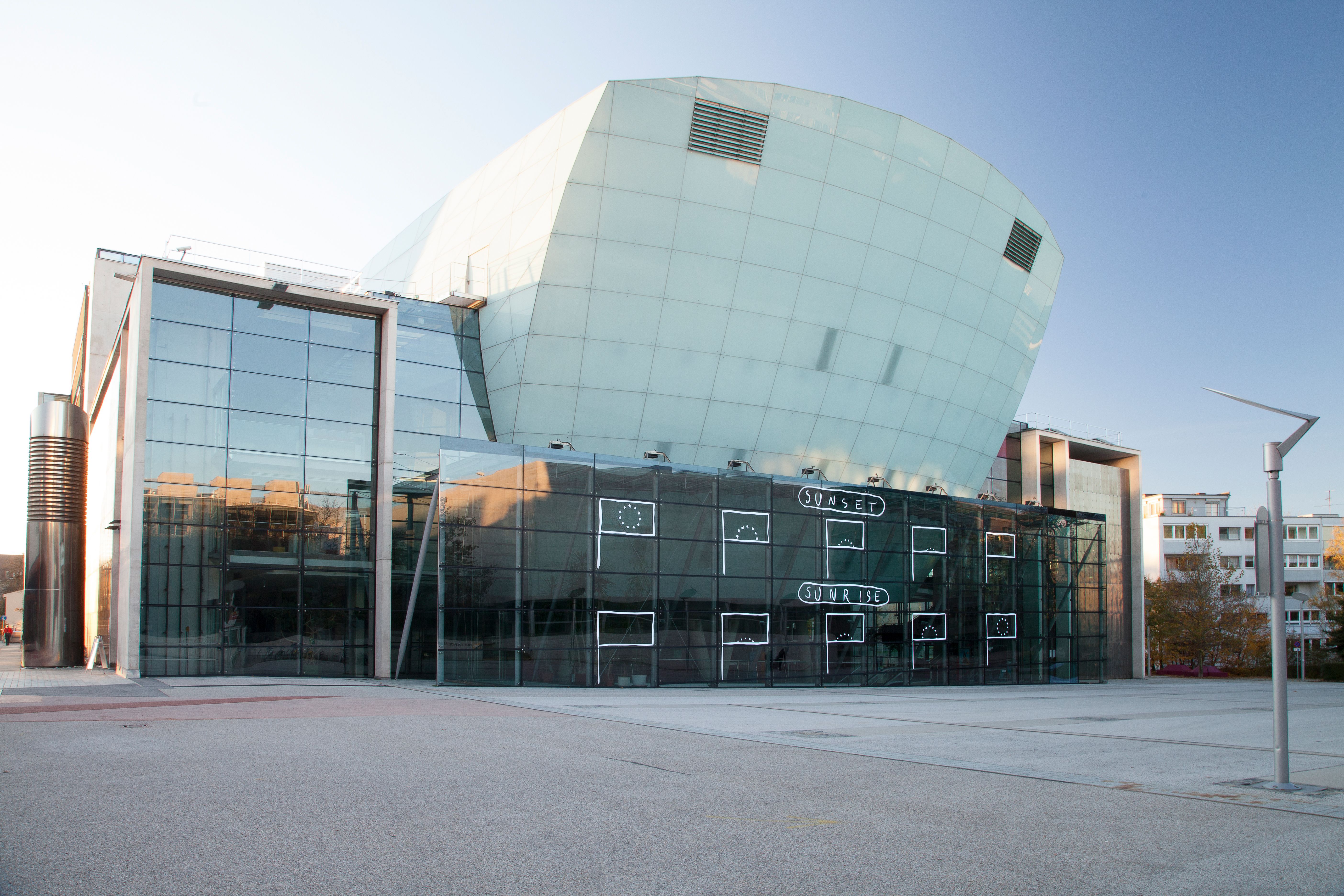

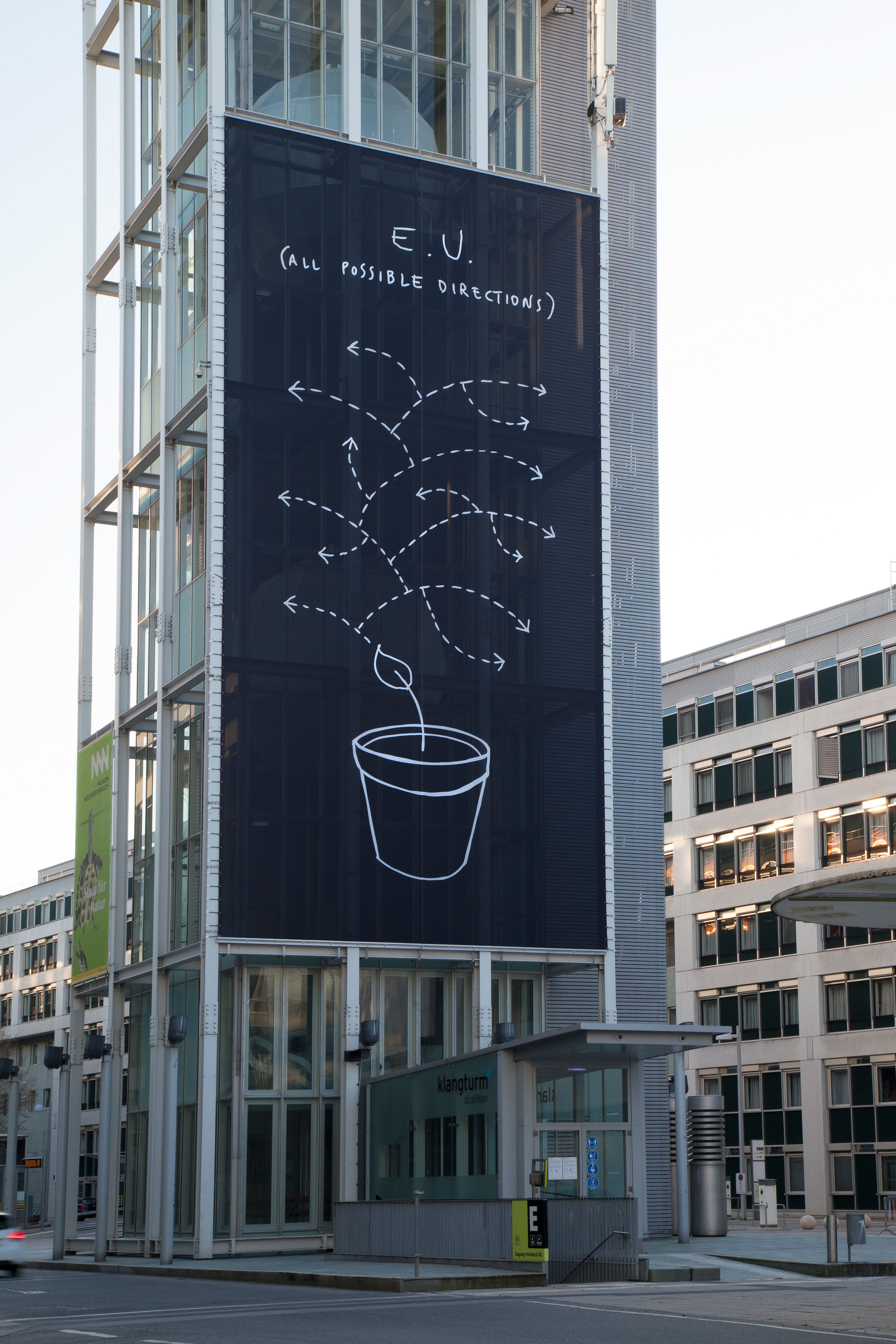
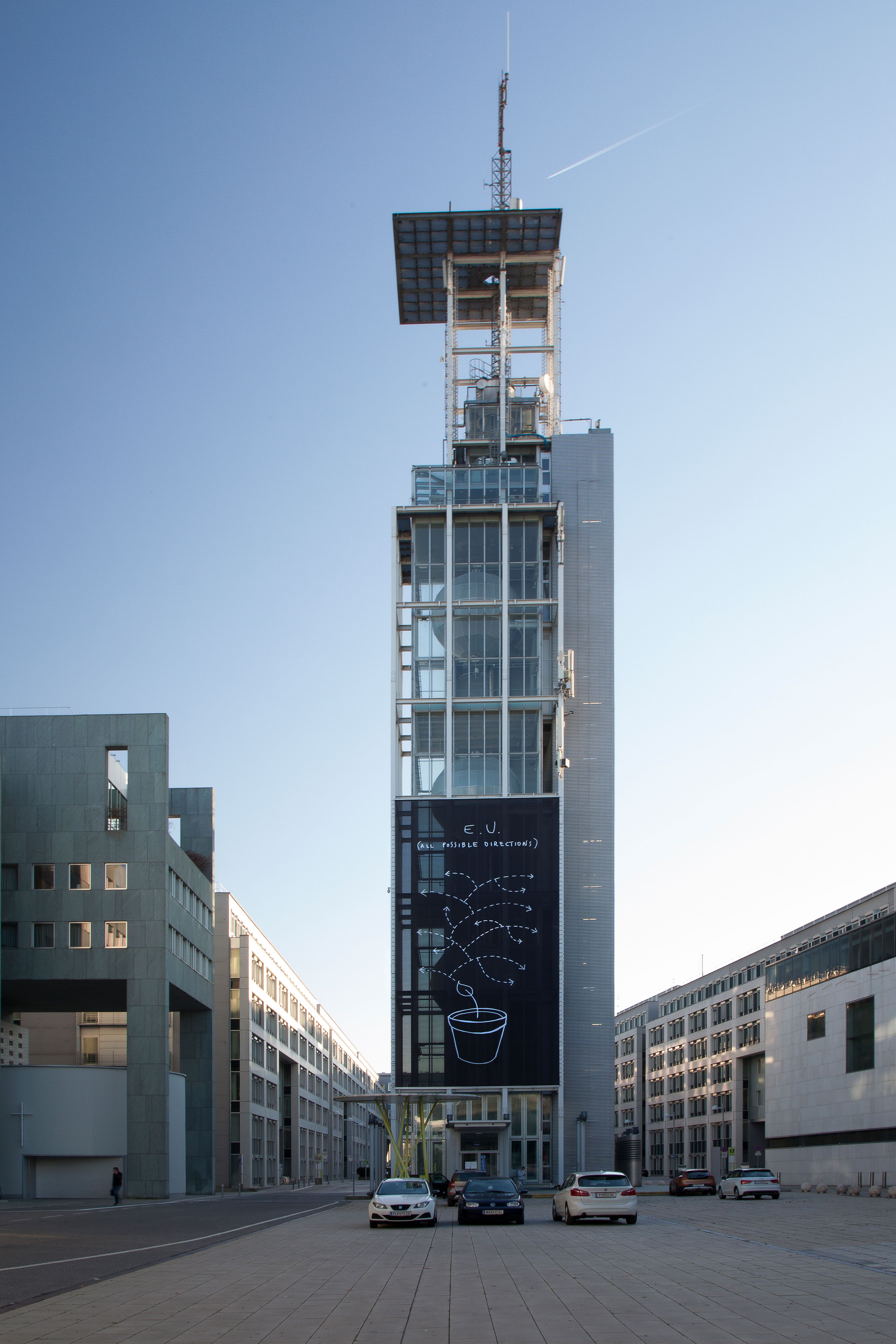
BORJANA VENTZISLAVOVA
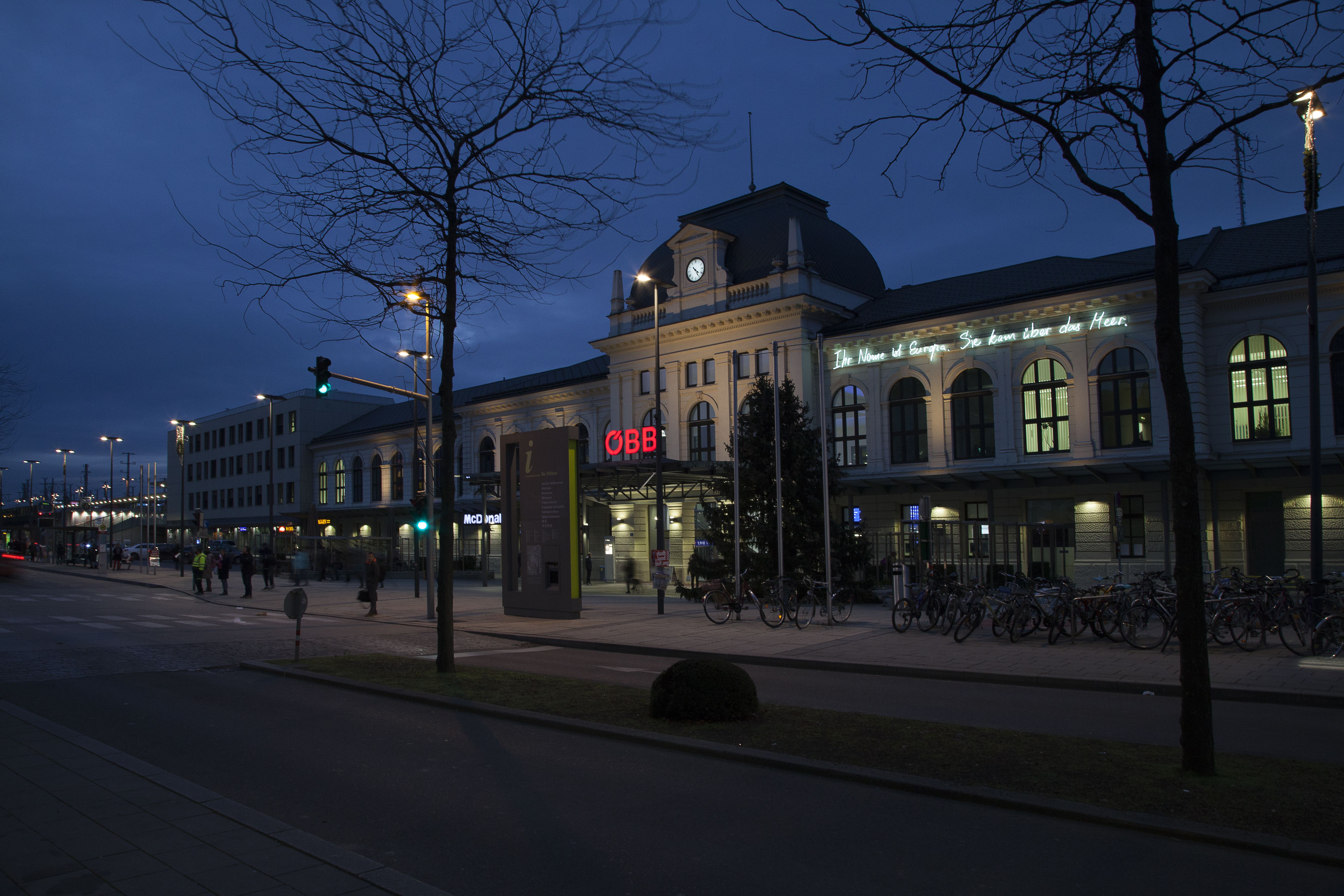
Borjana Ventzislavova hinterfragt eine europäische Identität
Die Künstlerin platziert großformatige Neon-Schriftzüge auf den Dächern und Fassaden von drei zentralen Gebäuden der Stadt: dem Bahnhof, dem Rathaus und dem Landtagsschiff. Die Lichtinstallationen sind inhaltlich mit der Funktion der Orte, wo sie montiert sind, fest verbunden – so thematisiert der Schriftzug „Ihr Name ist Europa. Sie kam über das Meer“ den Transitraum Bahnhof als einen Kristallisationspunkt der Migration. Ventzislavovas Interventionen evozieren Fragen einer europäischen Identität und führen gleichzeitig vor Augen, dass es kein einfaches Unterfangen ist, Antworten zu finden. Durch die von der Handschrift inspirierten Schriftbilder und die Offenheit ihrer Fragen und Feststellungen wird die Stadtlandschaft mit „Textschwingung“ aufgeladen und erhält so einen poetischen Charakter.
„Das Friedensprojekt Europa (...) ist sowie auch die ganze Welt, in eine tiefe Krise geraten. Der aktuelle Pandemie-Zustand stellt die Europäische Union zunehmend in Frage. Meine Licht-Installationen im öffentlichen Raum beschäftigen sich mit Grundfragen unserer Gemeinschaft und deuten auf ein ernstzunehmendes Umdenken hin. Es liegt in unseren Händen, ob wir uns für die Demokratie in Europa einsetzen oder sie zerfallen lassen werden. Solidarität innerhalb der EU und gegenüber Nicht-EU Bürger*innen, Transparenz, Egalität, ein soziales, offenes und internationales Europa, sind nur einige der Gedanken, die mich bei den Überlegungen für dieses Projekt begleitet haben. Es ist Zeit uns die Frage zu stellen, in was für einer Welt wir leben wollen - in dieser kann Europa hoffentlich noch der sprichwörtliche Leuchtturm werden. Let’s all participate in this, it’s about us.“ (Borjana Ventzislavova)


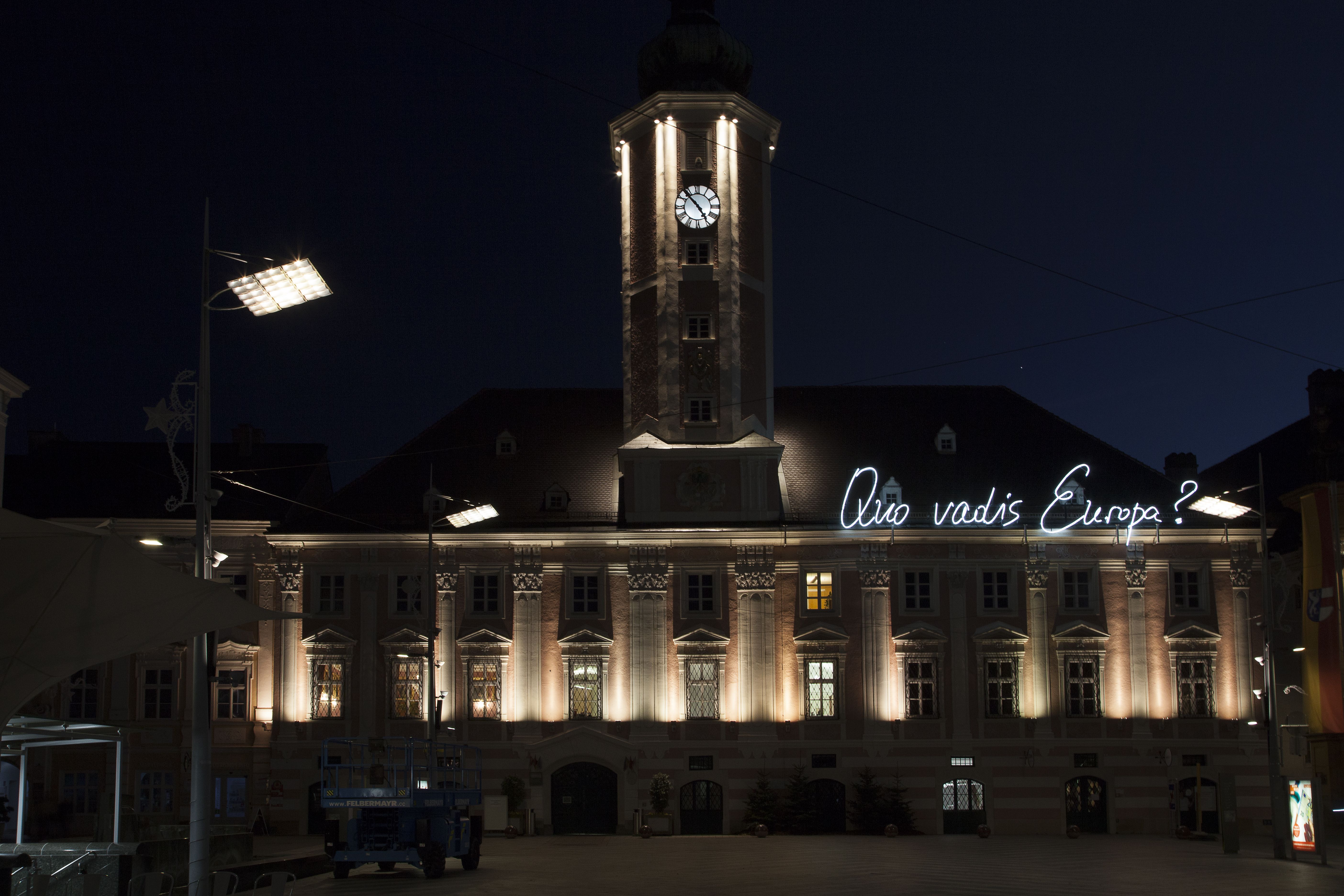
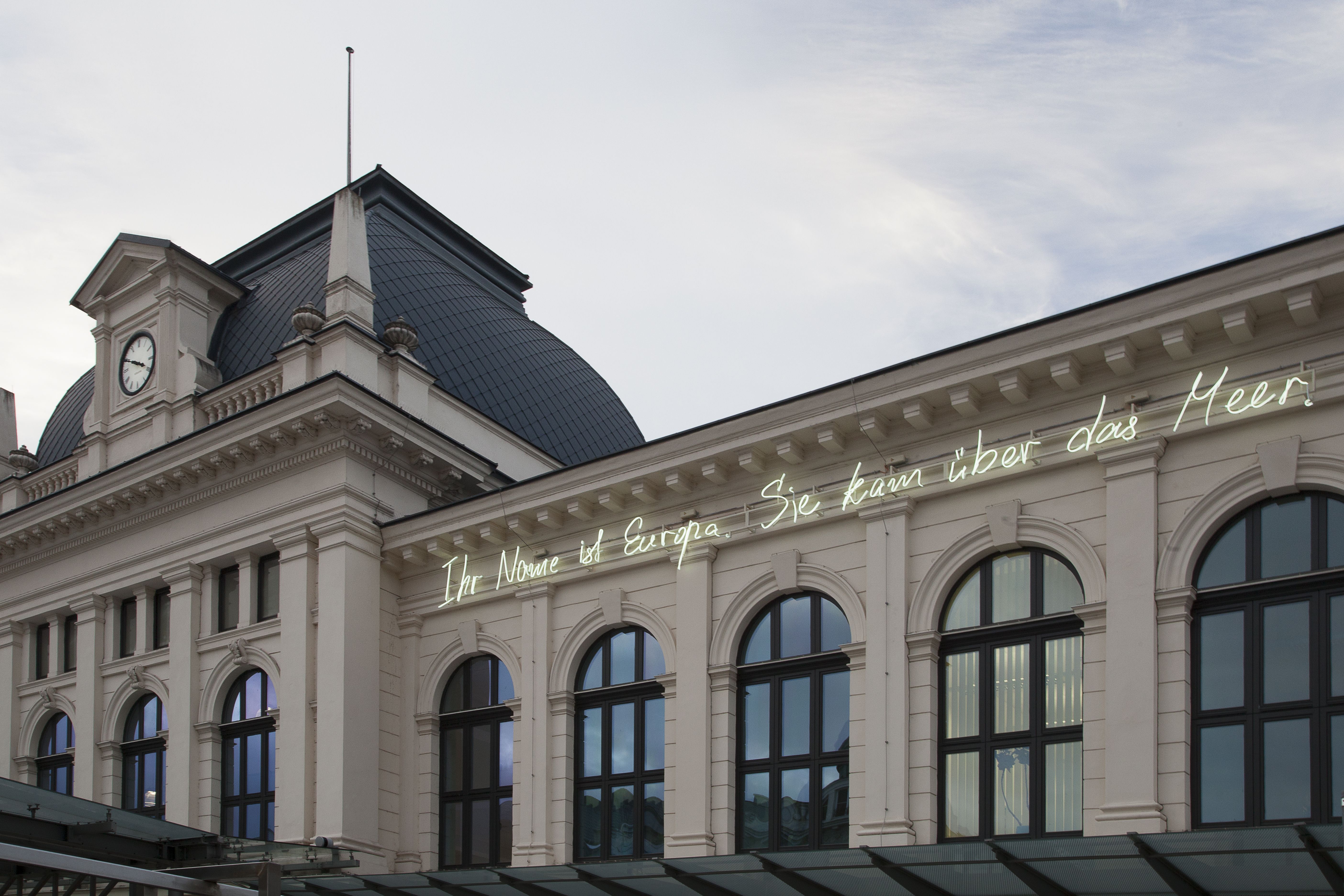
Images (11)
